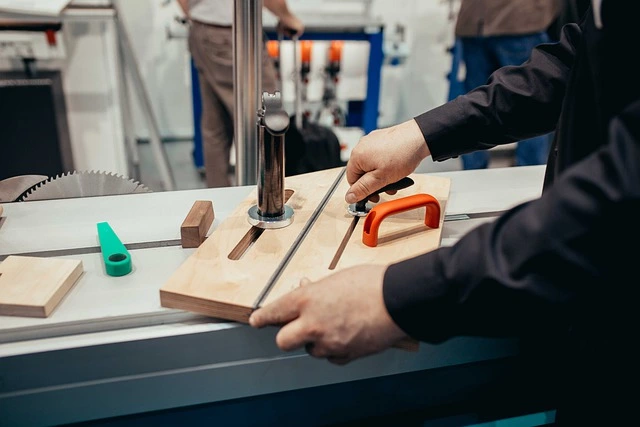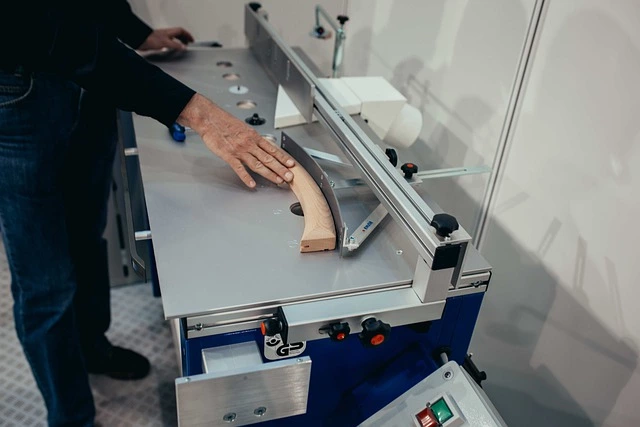
How do you plan a woodworking project?
- Start with the function of your wood piece. Focus on what the wood piece will be doing, the number of people to use it.
- Know the function of your wood piece. For instance, if this project is a cabinet, what will the cabinet be storing and what visual effect do you want it to have, and the type of visual effect you want it to have in its setting.
- It seems simple, but failure to pay attention to this stage of the process, the end product becomes more diluted and less defined as you progress. You have an idea of the direction you want to move in. It is based on sketches.
- Know the type of materials you need. It might be a solid wood project or a veneer over substrate the project. Most projects are a combination of the two, but you still need to define this upfront. When building from veneers over substrates, the tools, cutters, processing techniques, and waste calculations required are different from the project made from solid wood.
- Plan the tools and cutters that you will need. It takes a few thumbnail drawings to determine what type of router bits, shaper cutters, and other tooling is necessary to complete your project according to your design.
- Visualize how you make the cuts using the tools that you have. You can still change your design if a specific tool is above your budget.
- Look for specific tools that you will need as you design your project. That saves time and money and unnecessary frustration in finding a specific tool that may or may not exist.
- Develop and redevelop your thumbnails since you will see things that your original plans did not foresee. There is no need to go back to the drawing board, per se, but modify your drawings as you add a few.
- Make adjustments that do not require new tooling. They are likely to have different depths of cut or changed parameters with fine-tuning.
- Gather the glues, fillers, and finishes you will need. Finishes range from hand-applied oil, brush-applied varnishes, or sprayed on lacquer. Each has its specific properties for application ease and durability in varying conditions. Coloration can also be applied using dyes and stains, and these variants also have their properties for durability.
Why you should plan your woodworking project
- You should plan your woodworking project to make sure that you understand what steps and measurements are to be followed and when.
- Considering existing designs for inspiration
- A wood plan is like a road map before beginning a journey. Have a solid woodworking plan before beginning a woodworking project.
Sketching a wood plan
When you have a look that you like on your item, visualize where that furniture piece will reside, and consider how you will modify the dimensions to fit your space. Maintain the ratios of the original furniture piece as you look.
Whatever you are building, make sure it accommodates the intended use. A quick example is when making a table, consider the number of chairs used and the number of people to use it.

3D Modelling
Unlike drawing up plans by hand on sheets of paper, 3D modeling is about all your work visualized on-screen regardless of the size on a 1:1 scale. You are no longer worried about spoiling your paper with alterations.
Apply your materials to make it realistic and help you choose when creating a contrasting effect. That is where modeling it on-screen reveals mistakes and saves you a lot of money, time, and plain headaches.
Making a materials list
Review plans as you start by looking at the plans and reviewing our construction ideas.
Measure lengths using a scale. Measure various lengths of wood to determine what length lumber to buy.
Tools list
- Power jointer and thickness planer.
- Circular saw, for rough dimensioning.
- A hand saw router and two router bits.
- Jigsaw, for cutting curves.
- Combination square
- Tape measure.
- Crayons.
- Pencils.
- Knife.
Techniques
- Sanding has to be easy.
- Avoid drywall screws for woodworking.
- Know your wood’s moisture content.
- Avoid excess glue stains.
- Measure with a drafting square.
- Maintain a clean, orderly workspace.
- Keep a well-lit shop.
- Keep your blades sharp.
Using a plan of procedure for woodworking
At this point, you should have completed the design process and have a scaled drawing in hand and a bill of materials, and a cut list. Get ready to start assembling your item. Recall what you are building.
Put together a plan of procedure to guide you through the construction process. The wood plan should not be too long but to help you identify a logical sequence of building steps to organize the workflow.
What is the first step in designing a wood project?
The first step is function or planning. Familiarize yourself with the plans and procedures before buying any wood. The project should be something you can handle. You should be able to state the function of your wood piece before you start making it.
What is the sequence of operations in carpentry?
It starts with marking, planning, cutting, chiseling, and finishing, making various types of joints, and making different types of wooden patterns used for foundry molding.
What are woodworking processes?
These are stages in wood processing for the production of wooden products, which are machine working of natural wood or manufactured panels, assembly of machined parts, and surface finishing.
How do you make a wood cutting list?
When configuring your cut list, arrange the parts in a sequence the way you understand. List all solid wood parts first, followed by sheet good materials. Each part gets a code that you can write on the boards to identify the parts on the cut list. Note the quantity of each piece.
List the finished thickness, width, and length of each piece, based on your drawing. Include tenons or other integral part extensions. Some woodworkers include a column for rough sizes, adding a certain amount to each dimension for the first layout. Add the extra allowance when laying out the rough pieces. Note the type of wood for every wood piece in the materials column.
How to scale down woodworking plans
Use the hold-you-by-the-hand direction method. It gives you intricate and comprehensive instructions in the jobs to aid you to finish the project without delay. It is a seamless process with a detailed overview and in-depth preparation and directions on each woodworking task.
It removes any trouble or complication around it. The guidelines in the strategies allow you to be fast, efficient and perform the project effortlessly. With the correct directions drafted in understandable language, you might feel it is similar to having a woodworker specialist beside you, directing you through the whole project.
- Grain and Sheen: Teak Oil versus Danish Oil Uncovered - January 10, 2024
- The Cherry on Top: Crafting the Perfect Cutting Board - January 9, 2024
- Polyurethane Water-Based vs Oil-Based: Choosing the Right Finish - January 8, 2024
